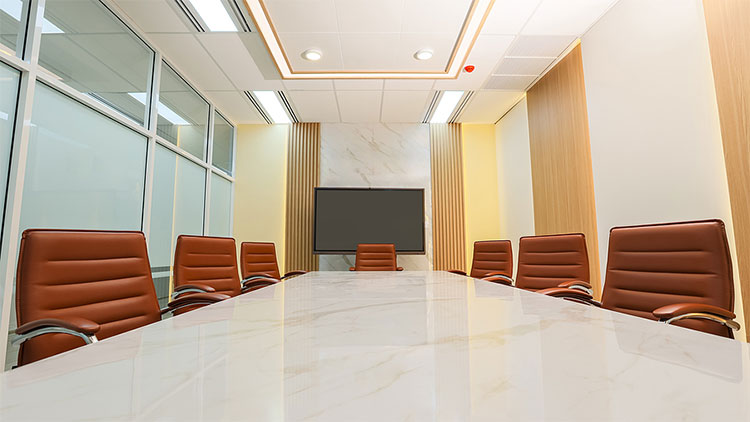Meeting Room Designs: The Key Features and Why They Are Important
Meeting Room Design
Meeting Room Lighting
Technology In The Meeting Room
Technology should be integrated into the design of your meeting rooms or office. Ensure that all participants have easy access to audio and video conferencing tools. This will help teams stay connected no matter where they are located. It is also important to provide a reliable internet connection and ensure that all electronic equipment is up-to-date.
Designing meeting rooms that are tailored to fit your team’s needs is key to unlocking better collaboration and driving productivity in the workplace. Ensure you consider all of the above features when designing your next meeting room!
To summarise, there are a number of key features that every meeting room should have. These include:
- Adequate space: The meeting room should be large enough to accommodate all of the participants comfortably. There should also be enough space for people to move around and for presentations.
- Proper seating: The seating in the meeting room should be comfortable and supportive. It is also important to have a variety of seating options, so that people can choose the type of seating that is best for them.
- Good lighting: The lighting in the meeting room should be bright enough to see everyone clearly, but it should not be so bright that it is distracting. Natural light is always best, but artificial lighting can also be effective.
- Adequate soundproofing: The meeting room should be soundproofed to prevent noise from outside from disrupting the meeting. This will help to ensure that everyone can hear each other clearly.
- Adequate technology: The meeting room should have the necessary technology to support your meetings. This may include a projector, whiteboard, or audio/visual equipment.
- A comfortable temperature: The temperature in the meeting room should be comfortable for everyone. It is important to avoid extremes of heat and cold.
- A relaxing atmosphere: The meeting room should be a relaxing and inviting space. This will help to put people at ease and make them more productive.
By following these tips, you can design a meeting room that is both functional and comfortable. This will help to ensure that your meetings are productive and successful.
Here are some additional tips for designing a meeting room:
- Consider the purpose of the meeting room. What types of meetings will be held in the room? How many people will typically attend? Once you know the purpose of the room, you can start to design it accordingly.
- Choose the right furniture. The furniture in the meeting room should be comfortable and supportive. It is also important to choose furniture that is the right size for the room.
- Add some personality. The meeting room should be a comfortable and inviting space. Add some personal touches, such as artwork or plants, to make the room feel more homey.
- Keep it clean and organized. A clean and organized meeting room is a productive meeting room. Make sure to keep the room clean and organized before and after each meeting.

